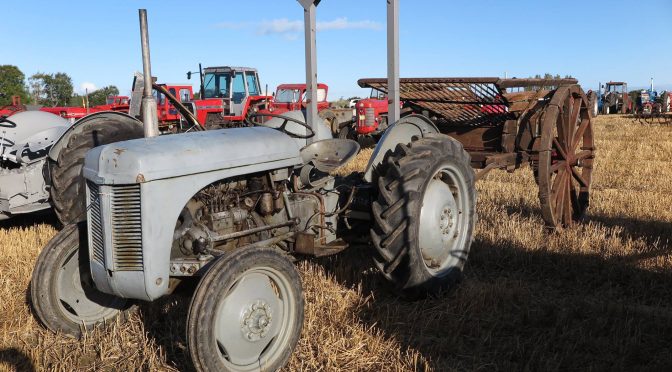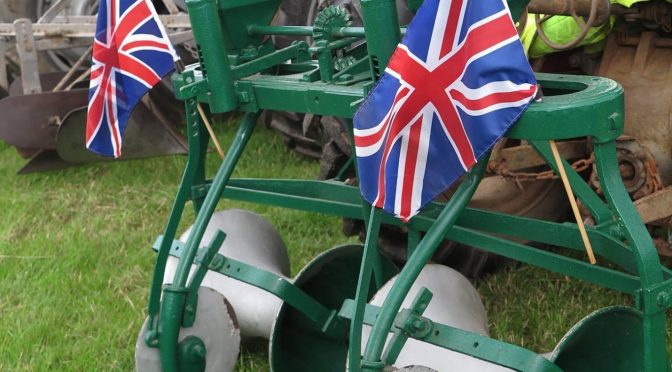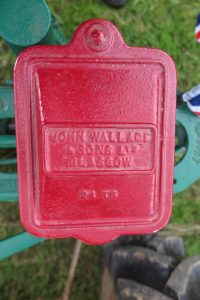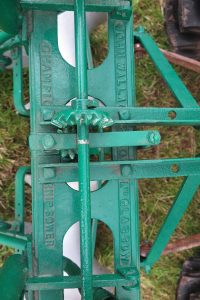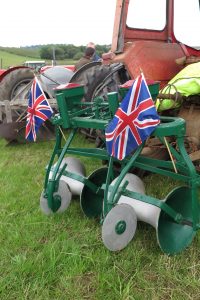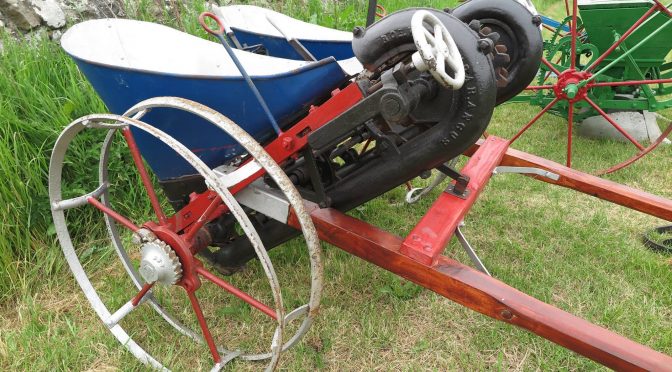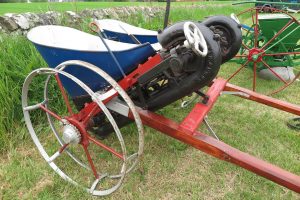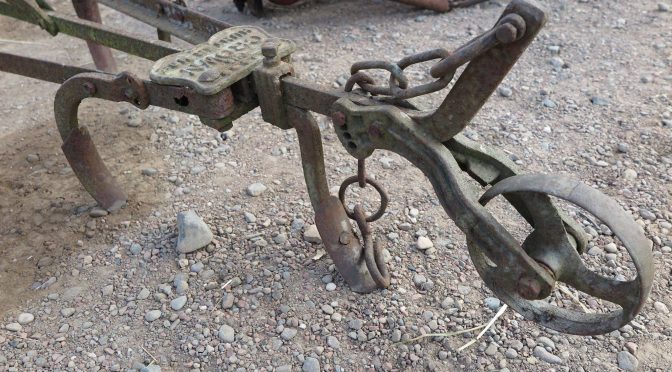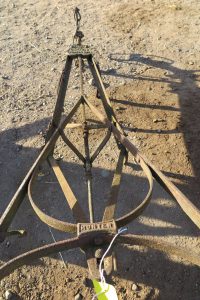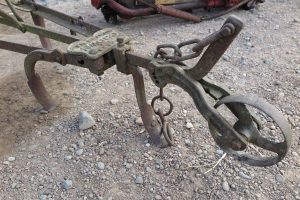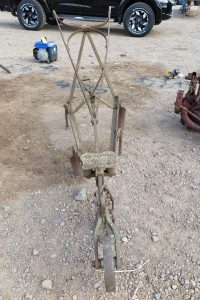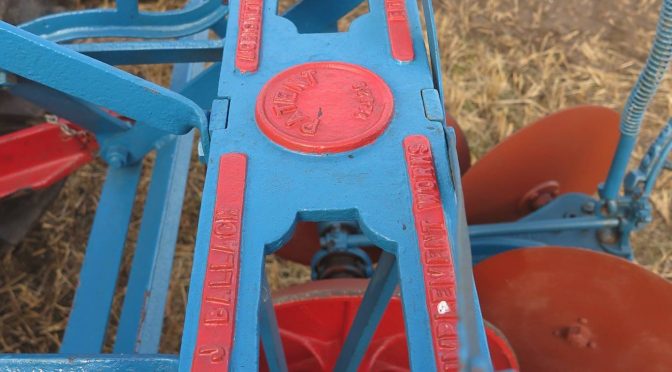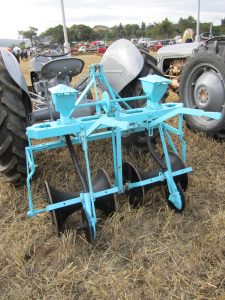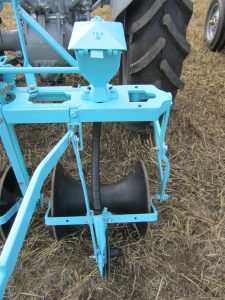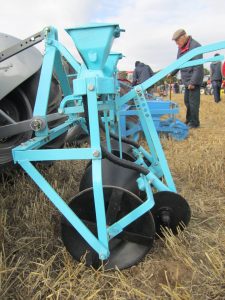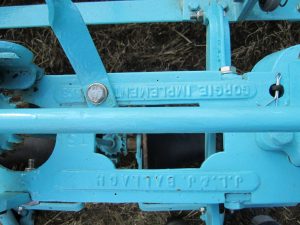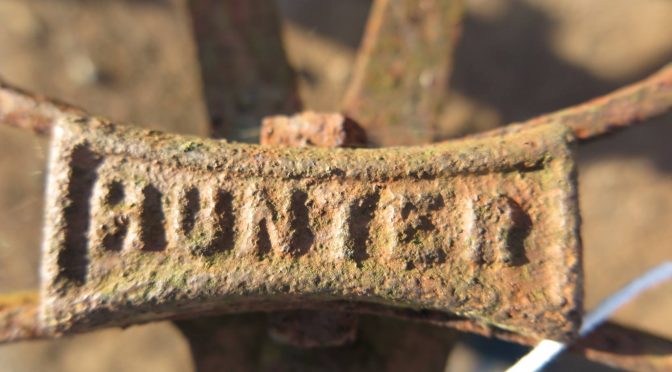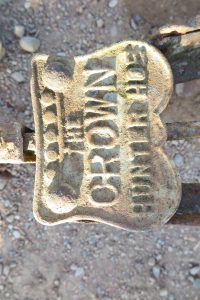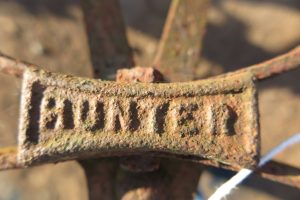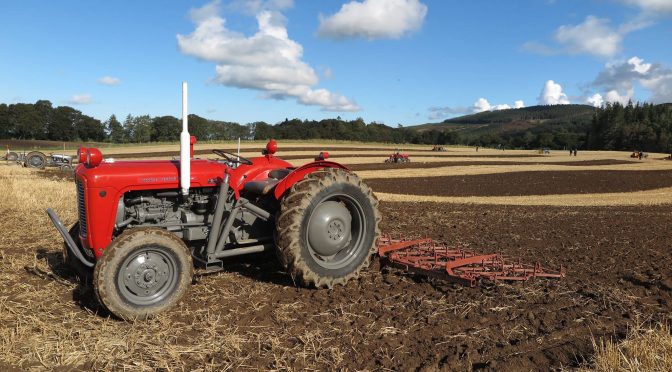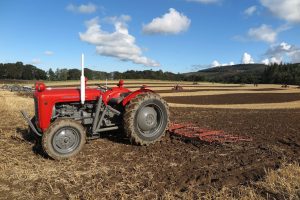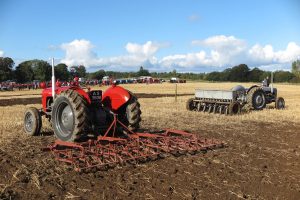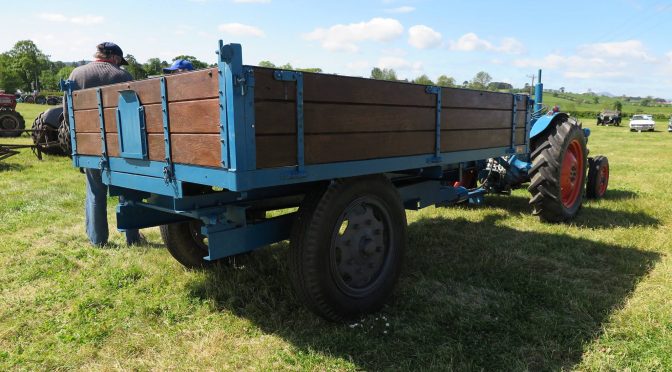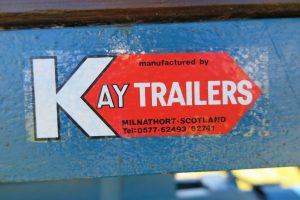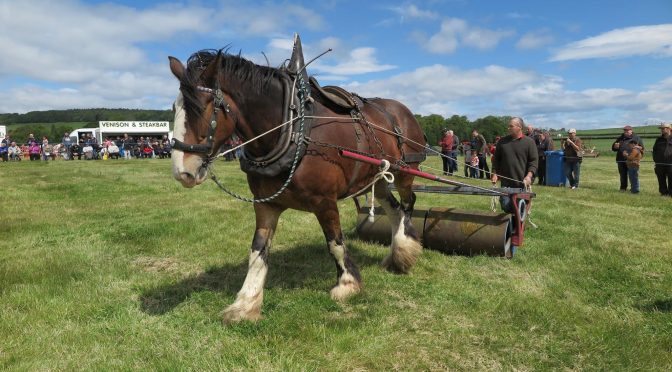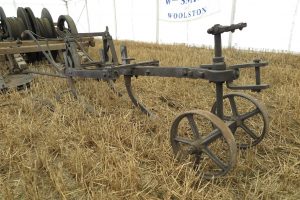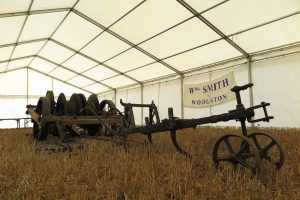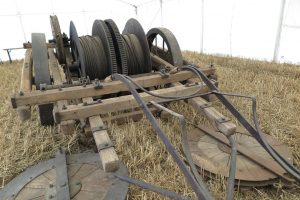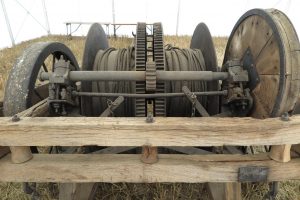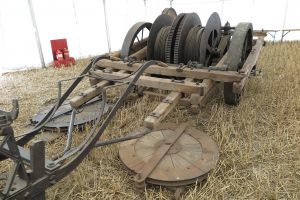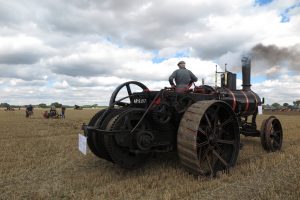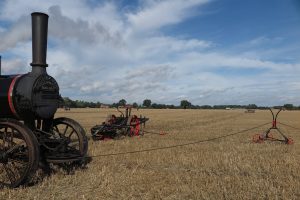The Board of Agriculture and Internal Improvement undertook an important survey of agriculture and rural improvement in Britain from 1793 to 1817. This series was referred to as the County Agricultural Surveys, with each report having the title “General View of the Agriculture of the County of …”. Each survey generally focused on a county or a small number of counties.
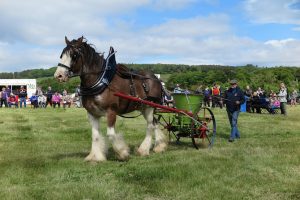 Each survey was systematically undertaken and written up under a number of headings. These included geographical state and circumstances, state of property, buildings, mode of occupation, enclosing, draining, arable and grass grounds, implements, gardens and orchards, woods and plantations, wastes, livestock, rural economy, political economy, obstacles to improvement, and means of improvement.
Each survey was systematically undertaken and written up under a number of headings. These included geographical state and circumstances, state of property, buildings, mode of occupation, enclosing, draining, arable and grass grounds, implements, gardens and orchards, woods and plantations, wastes, livestock, rural economy, political economy, obstacles to improvement, and means of improvement.
The accounts contained detailed accounts of the implements and machines used in each county, together with the changes that were being made to them.
The account for Fife written by John Thomson, provides a range of insights into the character and state of implements used in that county. It is worth quoting at length:
“Formally the implements of husbandry were few, simple, and rudely constructed. But of late, from the progress of agricultural science, the superior and more diffusive knowledge of mechanical arts, and a growing taste for neatness and elegance, their number has greatly 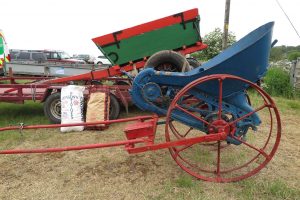 increased, and they have received much improvement in the mode of construction and excellence of workmanship. As it was the principal design, so it has been the happy effect, of these additions and improvements, to facilitate, expedite, and render more perfect, the various necessary operations of husbandry. In mentioning these implements, we need not take up time with a very particular and minute description of them, as they are, in general, the same here as in the neighbouring counties, and have been distinctly described in other agricultural surveys.
increased, and they have received much improvement in the mode of construction and excellence of workmanship. As it was the principal design, so it has been the happy effect, of these additions and improvements, to facilitate, expedite, and render more perfect, the various necessary operations of husbandry. In mentioning these implements, we need not take up time with a very particular and minute description of them, as they are, in general, the same here as in the neighbouring counties, and have been distinctly described in other agricultural surveys.
The old Scots plough is now almost entirely gone into disuse, and its place supplied by a small light plough, usually with an iron head and a cast mettle mould-board, constructed on such principles as to require less power to draw it,and to perform the work with greater exactness and perfection. Few ploughs, constructed entirely according to the form of Mr Small’s, are used in this county. They are thought not to answer well, and therefore not in general estimation. This, however, may be owing, not to any defect in the form of the plough, when properly made, but to the want of skill in our mechanics, who may not be able to execute the work with sufficient exactness.
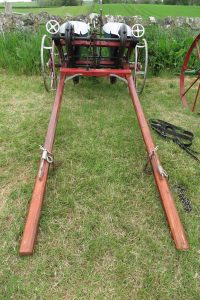 The plough most commonly in use has no chain; the sheath is of wood, and without curvature; and the mould-board, instead of being hollow, is round. The beam, though sufficiently low behind, is formed with such a curvature as to bring the bridle down to the proper line of draught, and is frequently strengthened with a plate of iron planted on each side, and extending the whole length; or, in place of these, with a plate of iron on the lower side. The part where the coulter passes through it, is fortified with a piece of iron above and below. But a great part of this iron work is unnecessary, as the beam seldom gives way, except at the coulter or sheath;a nd therefore, if properly secured at these points, there will be little danger of failure.
The plough most commonly in use has no chain; the sheath is of wood, and without curvature; and the mould-board, instead of being hollow, is round. The beam, though sufficiently low behind, is formed with such a curvature as to bring the bridle down to the proper line of draught, and is frequently strengthened with a plate of iron planted on each side, and extending the whole length; or, in place of these, with a plate of iron on the lower side. The part where the coulter passes through it, is fortified with a piece of iron above and below. But a great part of this iron work is unnecessary, as the beam seldom gives way, except at the coulter or sheath;a nd therefore, if properly secured at these points, there will be little danger of failure.
The hollow mould-board is certainly best for opening up stiff ground, and for ploughing ley, strong clay, or such land as admits of a clean furrow. But when the mould is loose, wet, and apt to fasten to the plough, the round mould-board seems to be preferable, as it clears itself more easily of the earth, and makes the furrow neater.
The harrow is another implement indispensably necessary in husbandry. It is commonly four feet square, and consists of four bulls, with four slots passing through them at right angles; and both the bulls and slots at equal distances from one another. Each harrow has 20 iron teeth, or tyne, as they are usually termed, five in each bull; the whole weighing about 72 English pounds.
 I do not know that any remarkable improvement has been made upon this instrument in this county, though it certainly is very capable of it, particularly in the arrangement of the tyne, with a view to produce as many separate ruts at once as possible.
I do not know that any remarkable improvement has been made upon this instrument in this county, though it certainly is very capable of it, particularly in the arrangement of the tyne, with a view to produce as many separate ruts at once as possible.
Each harrow is drawn by ne horse; and generally two, sometimes three horses are yoked a-breast. The power is applied to one of the corners of the harrow, to give a greater breadth to the stroke, and to increase the number of ruts.
There is a heavy harrow, called a break, which is used for breaking stiff land, and loosening and tearing up grass roots and quick weeds. The construction of this is much the same with that of the common harrow, only much larger and heavier, and furnished with a greater number of teeth. Sometimes it consists of two parts, which move on iron joins; constructed in this manner, the whole harrow will be able to touch the ground, and no part of it pass without doing execution. In some cases, however, I should think the other kind preferable. In land that is uneven, and starts up into hard, lumpy, and tough points or eminences, the jointed harrow can bear upon these with only half its weight at a time; but when the other is drawn right across them, they have to sustain the weight of the whole harrow, and consequently will more readily give way, To answer every purpose for which the break-harrow is necessary, and at the same time, to save the expense of having more than one; the jointed kind may be made to act occasionally as if it were all one piece, by the application of one or two strong cross bars so fitted as to be conveniently put on and removed, as circumstances may require.
There is also a small light harrow used by many of the farmers for covering grass seeds. This is very proper, especially when the grasses are sown among young springing grain of any kind, as there is no danger of its tearing up the young plants, which the larger harrow often does.
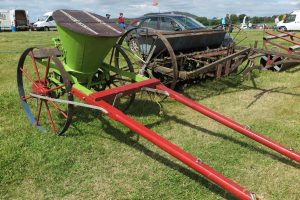 Rollers are much used, and now considered as necessary implements in husbandry. They are either of stone, or cast iron. They are either of stone, or cast iron, or wood, from five feet to five feet and a half long, and of different diameters and weight, according to the materials of which they are formed, and the purposes they are meant to serve. They are sometimes made to consist of two pieces; and, if made of wood, the pieces bound, each at both ends, with hoops of iron, and moveable independently of one another.
Rollers are much used, and now considered as necessary implements in husbandry. They are either of stone, or cast iron. They are either of stone, or cast iron, or wood, from five feet to five feet and a half long, and of different diameters and weight, according to the materials of which they are formed, and the purposes they are meant to serve. They are sometimes made to consist of two pieces; and, if made of wood, the pieces bound, each at both ends, with hoops of iron, and moveable independently of one another.
As different kinds of ground, and the different purposes of rolling, may require rollers of different weight, it might be proper to make the roller light, but with a box on the frame or carriage, into which stones or any other heavy substance may be put occasionally. In this way the weight could be increased or diminished at pleasure, and the same roller be made to answer in all cases.
The usual purposes to which the roller is applied, are, smoothiing grass lands, or giving them more solidity when loose and open, and breaking the clods of rough land under tillage. It is likewise applied to land newly sown with flax or grass seeds, or turnip; and when young wheat is harrowed in the spring, a practice which is sometimes followed, this operation is usually succeeded by rolling, There are some kinds of land that have a natural tendency to heave and swell, soon after the grain is sown, by which the tender plants are in danger of being torn up by the roots and destroyed. Frequent ploughing may reduce and consolidate this kind of soil, but where this remedy has not been used, nothing except the application of a heavy roller can save the crop.
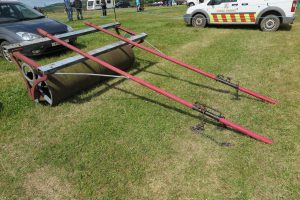 Instruments for drilling and hoeing are numerous, and of various construction. The drill barrow, for sowing turnips and other small seeds, is simple and of easy management. One kind requires only one man, and another two, to ,damage it. Some years aho a kind of drill machine for turnip was in use, which was drawn by a horse, run upon two wheels which turned the seed box, had a share for making the rut or furrow, and dragged a small harrow behind for covering the seed. But this is now less commonly used, and has given way to others more simple, and equally answerable.
Instruments for drilling and hoeing are numerous, and of various construction. The drill barrow, for sowing turnips and other small seeds, is simple and of easy management. One kind requires only one man, and another two, to ,damage it. Some years aho a kind of drill machine for turnip was in use, which was drawn by a horse, run upon two wheels which turned the seed box, had a share for making the rut or furrow, and dragged a small harrow behind for covering the seed. But this is now less commonly used, and has given way to others more simple, and equally answerable.
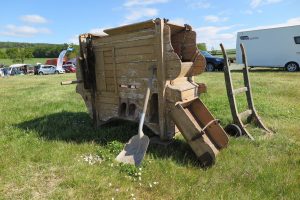 Besides the hand-hoe, there are two kinds of horse-hoeing; one for the purpose of laying away the earth from potatoes, turnip, or drilled beans, which is made quite close on the left side, to prevent the earth from falling upon, and covering up the sound plants; but is otherwise mounted like a common plough, only of a smaller size. The other, designed to lay back the earth to the plants, is usually furnished with a mould-board on each side, moveable on joints at the sheath, which consequently can be more or less spread out,a nd fixed at any width, which the distance of the drill rows may require. It has sometimes two socks or shares, one like that of the common plough, and another broad, obtuse pointed, and of a sharp edge, designed to cut the weeds, clean the bottom of the furrow, and to raise up more earth to be laid to the rows.
Besides the hand-hoe, there are two kinds of horse-hoeing; one for the purpose of laying away the earth from potatoes, turnip, or drilled beans, which is made quite close on the left side, to prevent the earth from falling upon, and covering up the sound plants; but is otherwise mounted like a common plough, only of a smaller size. The other, designed to lay back the earth to the plants, is usually furnished with a mould-board on each side, moveable on joints at the sheath, which consequently can be more or less spread out,a nd fixed at any width, which the distance of the drill rows may require. It has sometimes two socks or shares, one like that of the common plough, and another broad, obtuse pointed, and of a sharp edge, designed to cut the weeds, clean the bottom of the furrow, and to raise up more earth to be laid to the rows.
 The reaping hook needs scarcely to be taken notice of. This instrument continues much the same as that it has been from time immemorial, and probably is incapable of any material improvement. In some places, and on particular occasions, when reapers have been scarce, cutting grain with the scythe has been practiced. But as a sufficient supply of hands can generally be procured in this populous county, this mode of reaping has not become an object of consideration, nor is it constantly followed by any one.
The reaping hook needs scarcely to be taken notice of. This instrument continues much the same as that it has been from time immemorial, and probably is incapable of any material improvement. In some places, and on particular occasions, when reapers have been scarce, cutting grain with the scythe has been practiced. But as a sufficient supply of hands can generally be procured in this populous county, this mode of reaping has not become an object of consideration, nor is it constantly followed by any one.
Wheel carriages have undergone the same improvements, and are brought to the same perfection, in this, as in other counties, These used in husbandry are chiefly of two kinds, the close cart, and the corn cart. The former is of greater or less dimensions and strength, according as it is to be drawn by one or two horses. Axles of iron are much used, both from a principle of economy, and from their contributing to the easiness of the draught. The bodies are made to turn over, when unloading, independent of the shafts, to which they are connected by an iron rod a little before the axle. Their sides are strengthened and supported by iron stays both on the fore and hinder part, and when resting on the shafts, they are secured by iron  locks before. Of late they are made broader in the bottom, projecting some inches over the naves, by which means their capacity is enlarged, and the side standards, being more perpendicular, are less apt to be strained by the weight of the load. Sometimes a frame is made to fit occasionally on the close bodied cart for the purpose of carrying hay or corn in the straw. Farmers, however, have generally carts constructed solely for this purpose. These are open bodied, much longer, and with a wide projection above, so as to admit a load of hay to the extent of a ton weight. Sometimes they are so constructed, that the body can be removed from the shafts, and, by fixing bars on the sides and ends with iron bolts, they can be easily fitted for the purpose of carrying wood; and were they made close in the bottom, they would be equally convenient for the carriage of stones.
locks before. Of late they are made broader in the bottom, projecting some inches over the naves, by which means their capacity is enlarged, and the side standards, being more perpendicular, are less apt to be strained by the weight of the load. Sometimes a frame is made to fit occasionally on the close bodied cart for the purpose of carrying hay or corn in the straw. Farmers, however, have generally carts constructed solely for this purpose. These are open bodied, much longer, and with a wide projection above, so as to admit a load of hay to the extent of a ton weight. Sometimes they are so constructed, that the body can be removed from the shafts, and, by fixing bars on the sides and ends with iron bolts, they can be easily fitted for the purpose of carrying wood; and were they made close in the bottom, they would be equally convenient for the carriage of stones.
Single horse carts are coming much into use, upon this just principle, that two single horse carts will carry more than one double cart, with less strain to the arts, less damage to the roads, and greater ease to the horses, which, in a double cart, without great attention in the driver, can scarcely ever be made to draw equally; and one man can easily manage two carts of this kind. It is to be observed, however, that if single horse carts are employed in carrying hay or corn in the straw each cart should have a driver, especially where the roads are not very good, as such high and bulky carriages are more easily overturned.
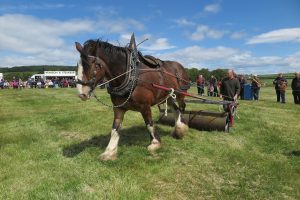 Fanners, for cleaning grain, have been used in this county for many years. This is surely a great acquisition to husbandry. Formerly the farmer was subjected to all the inconvenience of delay in calm weather;a nd when there was a sufficiency of wind, he was obliged either to carry his corn to the fields, or wait till it should blow directly into his barn-door; when often occasioned much loss of time, much extraordinary labour, and much waste of grain. And the same or greater inconvenience were felt at the mills. But now, by the use of the banners, all these hardships are removed. This machine, is of various construction, and of various powers. Some are made only to separate the chaff and light grain, and others perform the business of riddling and sifting also. They cost from 2l to 3l or 4l according to the workmanship and complication of the machinery; and, if properly taken care of, will last many years.
Fanners, for cleaning grain, have been used in this county for many years. This is surely a great acquisition to husbandry. Formerly the farmer was subjected to all the inconvenience of delay in calm weather;a nd when there was a sufficiency of wind, he was obliged either to carry his corn to the fields, or wait till it should blow directly into his barn-door; when often occasioned much loss of time, much extraordinary labour, and much waste of grain. And the same or greater inconvenience were felt at the mills. But now, by the use of the banners, all these hardships are removed. This machine, is of various construction, and of various powers. Some are made only to separate the chaff and light grain, and others perform the business of riddling and sifting also. They cost from 2l to 3l or 4l according to the workmanship and complication of the machinery; and, if properly taken care of, will last many years.
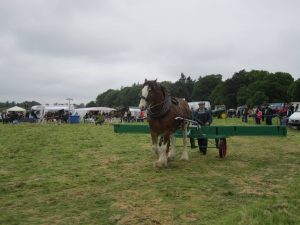 Threshing mills, a late, but most important invention, are now very common in Fife, and their number is increasing every year. In almost every parish they have been erected, and in several single parishes notes than 7 or 8 are to be seen. In the whole county, the number may probably be nearly 300. They are of different constructions, and various powers: and since they were first introduced, have received very considerable and material improvements. Some are moved by water, when a convenient stream can be had’ but the greatest number are wrought by horses. I know of none that do not require at least two horses, Some require four,a nd some six. They trash from two to twelve bolls in the hour; and many of them, by connecting fanners and other pieces of machinery with the principal movement, are made not only to thrash, but also to clean, to riddle, and to sift at the same time.
Threshing mills, a late, but most important invention, are now very common in Fife, and their number is increasing every year. In almost every parish they have been erected, and in several single parishes notes than 7 or 8 are to be seen. In the whole county, the number may probably be nearly 300. They are of different constructions, and various powers: and since they were first introduced, have received very considerable and material improvements. Some are moved by water, when a convenient stream can be had’ but the greatest number are wrought by horses. I know of none that do not require at least two horses, Some require four,a nd some six. They trash from two to twelve bolls in the hour; and many of them, by connecting fanners and other pieces of machinery with the principal movement, are made not only to thrash, but also to clean, to riddle, and to sift at the same time.
Of the many excellent and efficient machines of this kind to be found in the county, the one erected some years ago, at Kilry, in the parish of Kinghorn, was reckoned, at the time of its erection, one of the most complete. It is moved by water, and is said to thrash and clean 12 bolls in the hour. Many people in the neighbourhood carry their grain to be thrashed there, which they get done for sixpence per boll. Combined with this, there is a corn mill, a barley mill, and a hoisting tackle, all moved by the same water wheel.
Since that period, a great many other thrashing mills of equal, and in some of superior power, have been erected in this county. There is a very powerful one at Pusk in the parish of Leuchars, which was erected by Mr Buchan the late tenant. And Mr Cheap of Rossie has erected one lately, which, in respect of the excellence of materials and workmanship, the convenience of the several arrangements connected with it, the extent of its powers, and completeness of execution, is equal, perhaps superior to any in Fife.
The advantages of this invention to husbandry are great. It separates the grain from the straw more commonly than flails can do. It performs the work in a shorter time; and requires fewer hands upon the whole. By thrashing wet grain quickly and completely, it saves it from being lost in wet harvests, when the crop cannot be got easily and properly dried. In short, the same hands, that would otherwise be necessary to the farm, will be able, with this instrument, to accomplish the business of thrashing without much perceptible loss of time, as they can always in an hour in the morning, before they go out to the plough, or other work without doors, thrash as much as will serve the bestial for one or perhaps two days.
In a few instances, indeed, I have heard complaints that this machine, though erected at great expense,a nd judged to be sufficiently executed, did not thrash clean. But this must be owing, did not thrash clean. But this must be owing, not to any defect in the principle, but to some inaccuracy in the construction and adjustment of the machinery: a circumstance not to be wondered at, in a work so new and so complicated. It may be expected, however, that, by a course trials, every defect will be discovered and corrected, and by the improved skill and dexterity which the mechanic will derive from practice, the machine will be brought to such perfection as to remove every complaint.
The photographs showing a selection of horse-drawn implements and machines were taken at past rallies organised and held by the Fife Vintage Machinery Club.
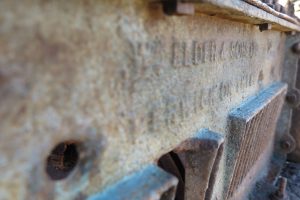 While firmly associated with Berwick on Tweed, and the Vulcan Foundry, the company sold its implements and machines into the Scottish Borders. The company set up an asociated trading company in Glasgow in the First World War. This was William Elder & Sons (Glasgow) Ltd. However, it did not remain in business for long. After the First World War, it established premises in Scotland. In 1922 they were located at Hope Park, Haddington, and at Newton St Boswells; these premises continued to trade into the early 1960s. By the early 1960s they were also associated with Reston Motor Garage, Motor Engineers, Reston.
While firmly associated with Berwick on Tweed, and the Vulcan Foundry, the company sold its implements and machines into the Scottish Borders. The company set up an asociated trading company in Glasgow in the First World War. This was William Elder & Sons (Glasgow) Ltd. However, it did not remain in business for long. After the First World War, it established premises in Scotland. In 1922 they were located at Hope Park, Haddington, and at Newton St Boswells; these premises continued to trade into the early 1960s. By the early 1960s they were also associated with Reston Motor Garage, Motor Engineers, Reston. 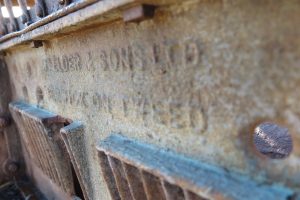 In Scotland the company functioned as an agricultural implement maker, an agricultural engineer, a mechanical engineer and a millwright. It acted as an agent for Massey Harris in 1926, and for Albion in 1945, and David Brown in 1955.
In Scotland the company functioned as an agricultural implement maker, an agricultural engineer, a mechanical engineer and a millwright. It acted as an agent for Massey Harris in 1926, and for Albion in 1945, and David Brown in 1955.